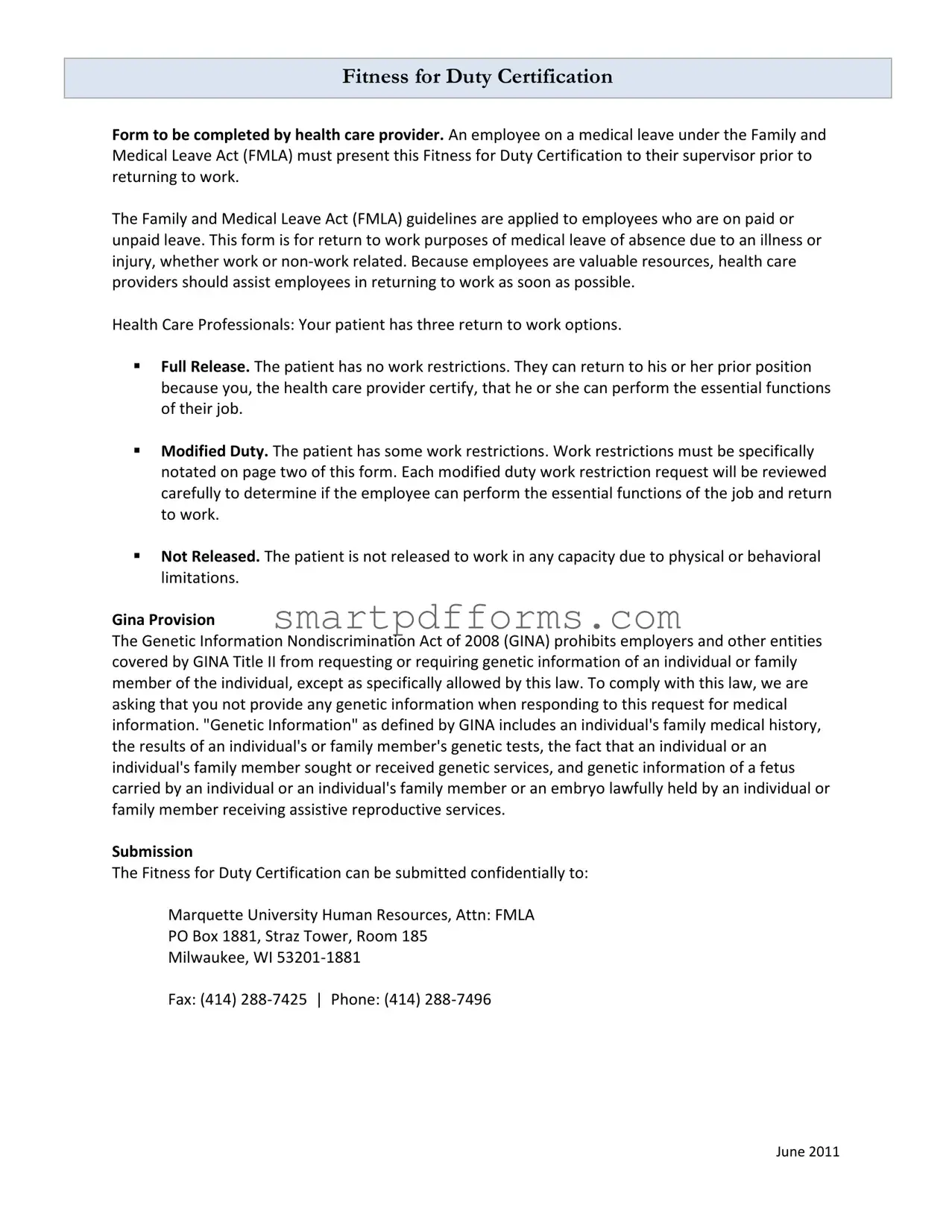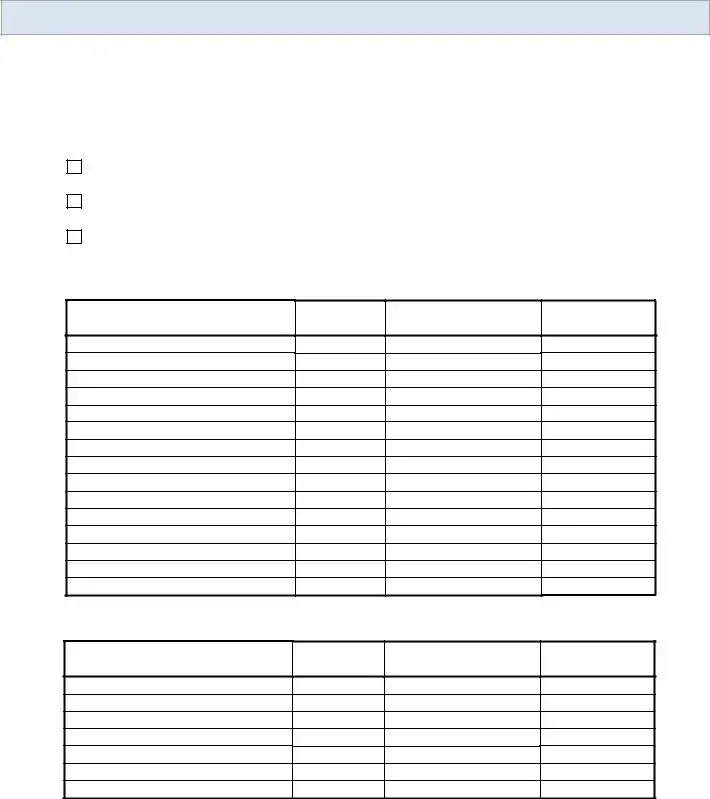Blank Fitness For Duty PDF Template
The Fitness for Duty Certification Form serves as a vital tool in the reintegration of employees back into the workforce following a medical leave of absence, as mandated by the Family and Medical Leave Act (FMLA). It requires completion by a healthcare provider and outlines three potential return-to-work options—full release, modified duty, or not released—based on the employee's ability to perform the essential functions of their job. Employers and healthcare professionals must navigate this process with care, adhering to guidelines that respect both the employee's health needs and workplace demands. For a smooth transition back to work, ensure this form is accurately filled out by clicking the button below.
Make This Document Now


